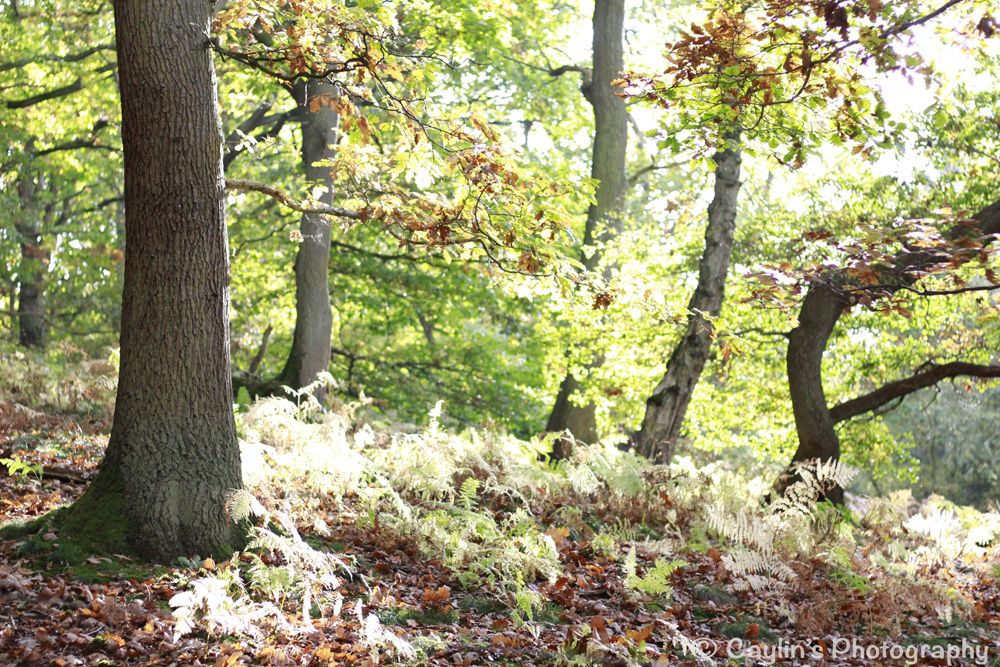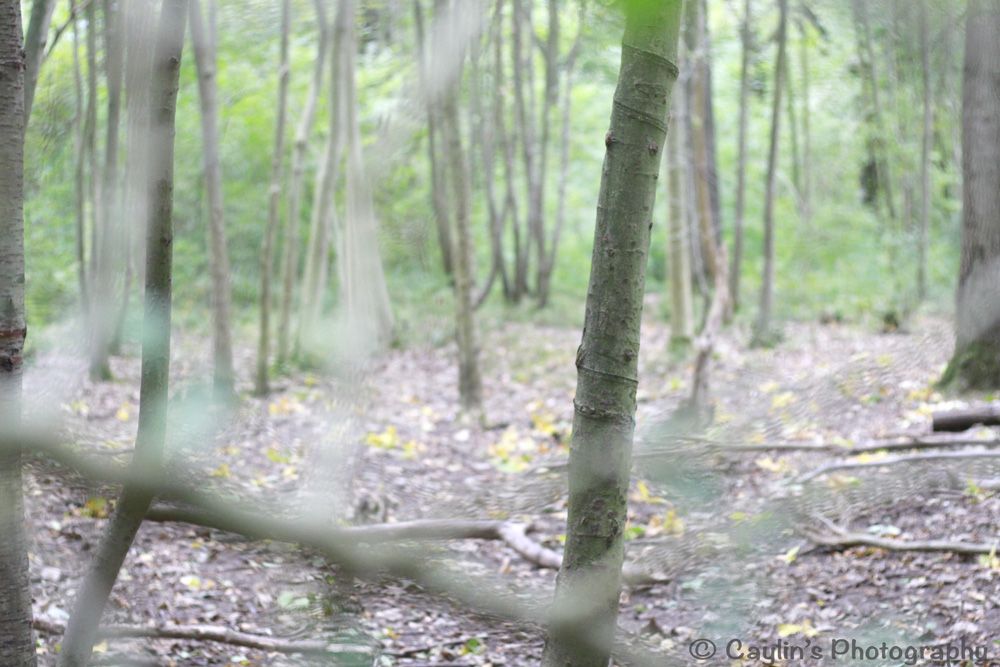Blog
Stories from my personal journey learning about and delivering Nature-rooted programs across three different countries
Why trees? What do woodlands do for children's play?
Caylin (Forest Schooled)

Empty space, drag to resize
I had a conversation with someone the other day who was interested in Forest School, but questioned why the ethos put an emphasis on it taking place in a woodland. It made me remember how I had a similar concern when I was first introduced to Forest School.
At the time I wondered why a setting with trees should be more highly valued as an outdoor space than other areas. I felt that there was a lot you could do in any outdoor space, so I questioned, 'Why trees?'
As I learned more about Forest School and its emphasis on child-led play, my perspective shifted from thinking, 'What can we do in the outdoors?' to 'How can we play in it?'
David Sobel (2008), an education writer, makes an interesting observation on children's outdoor play:
“Through conducting similar natural history observations of children in the out-of-doors in all kinds of settings, with children of all ages and in a number of different cultures, certain recurrent patterns emerge. Just as Howard Gardner has identified a set of intelligences in children, I have identified seven play motifs. Regardless of socioeconomic status, ethnicity, or ecosystem, children play in similar ways when they have safe free time in nature... Spend time at a safe, woodsy playground and you'll find children (1) making forts and special places; (2) playing hunting and gathering games; (3) shaping small worlds; (4) developing friendships with animals; (5) constructing adventures; (6) descending into fantasies; (7) and following paths and figuring out shortcuts. I think there are evolutionary reasons why children do all these things, but regardless of these explanations, it's important to recognize that these activities occur over and over” (pgs. 19-20).
The idea that children seem to have very similar play behaviours all over the world is fascinating to me. It also got me thinking about whether I've noticed any commonalities in outdoor play behaviours in the different settings (and countries) I have worked in.
I thought about all the things I'd observed kids do whilst playing in a variety of outdoor spaces - places like blacktop surfaces in school grounds, playing fields with trim trails, climbing frames and/or other play structures like slides and swings, areas with one tree, a few trees, or no trees, as well as various woodlands, both in the UK and USA. I also tried to be a bit more specific than Sobel, thinking of particular activities children engage in whilst playing outdoors.
What I came up with were five particular things I've noticed many children do, often and across the board, when playing outside (Interestingly, but perhaps not surprisingly, I realised I also played in these ways when I was a child too!):
- Getting up off the ground by climbing, balancing, and swinging on things
- Games involving running, chasing and/or hiding
- Making things, like crafts or artwork
- Getting dirty, including digging and mud play
- Building and using dens or shelters
(Note: There are so many other ways kids play, but for the sake of simplicity I wanted to keep it to these five common activities. It would be interesting to see what others might come up with based on their own personal observations and experiences! Would it be a similar list?)

So, after looking at such a list, a logical question to ask next is, 'What sort of outdoor space caters well for these behaviours?' And that brings me back to my very first question: 'Why trees?'
Though there are many influencing factors on children's play behaviours, the play environment has a significant role. The way children play is very dependent on what is available for them to play with.
Though we can provide kids with equipment to balance on, climbing frames to climb on, blacktop to run on, things to hide in or behind, material to make things with, sand boxes to dig in, clay or paints to get their hands dirty, and structures to use as dens or shelters, trees can also provide for all of these activities with, potentially, a lot less effort from us!
In the woods, kids can balance on logs and stumps, climb up into the branches of trees, have space to run around, find lots of places to hide, make things with sticks, leaves and more, get dirty digging or playing in mud, and use all sorts of material littering the woodland floor to make dens with. And, possibly the best part? We don't need to provide anything in order for these activities to take place... (Except, perhaps, a lift to the woods in the first place).
Not only do trees provide all sorts of resources for kids to play with, those resources can also be played with in a variety of ways, which gives them greater play value.
Shelly Newstead (2011) describes the concept of play value in more detail: “A child can usually play more with – or, can get more play out of – a cardboard box than they can from whatever's inside it. Cardboard boxes have endless possibilities – they can become anything that's in the child's imagination, whilst your battery-powered gizmos look like something and were obviously intended to be used in a certain way. Now of course children can and do use the gizmos in different ways for their play – but it's more difficult to do this, and children will play longer with something that has higher play value, like a cardboard box” (Newstead, 2011, pg. 28).
So, when something can be played with in a variety of different ways, it becomes a more valuable resource for play, inspiring imagination and encouraging creativity, both of which are essential for a child's healthy development. The resources trees provide can have a much higher play value than manufactured toys or play equipment – a stick can be almost anything whilst a slide is pretty much just a slide. An additional benefit is that a tree's resources can be regenerative – the trees keep growing and, and as long as the wood is managed sustainably, there's the potential for a never ending supply of leaves, logs and sticks (or swords, or wands, or arrows, or fishing rods – you get my point!)
The overall benefit of a play space comes from the variety of resources available as well as the play value of those resources. Now, we can (and do) manufacture outdoor play spaces with lots of resources that have high play value. It just seems a bit silly to me to do so when trees can do it naturally...
References:
Newstead, S (2011) The Buskers Guide to Playwork, Common Threads Publications Ltd, Hampshire United Kingdom.
O'Brien, L, Murray, R (2006) A marvellous opportunity for children to learn: A participatory evaluation of Forest School in England and Wales, Forest Research, Surrey.
Parsons, A (2011) Young Children and Nature: Outdoor Play and Development, Experiences Fostering Environmental Consciousness, And the Implications on Playground Design, Masters Thesis, Virginia Polytechnic Institute and State University, Available at: https://theses.lib.vt.edu/theses/available/etd-05062011-114155/unrestricted/Parsons_AE_T_2011.pdf (Accessed 23 January 2017).
Sobel, D (2008) Childhood and Nature: Design Principles for Educators, Stenhouse Publishers, Portland.
More Posts
WANT TO GET FOREST SCHOOLED TOO?
Subscribe to my email letters, something special from me to you so we can learn together. Each one is filled with heart-felt stories from the forest, resources you may find useful, and things that hopefully bring a smile too.
Thank you!
© 2022 by FOREST SCHOOLED

